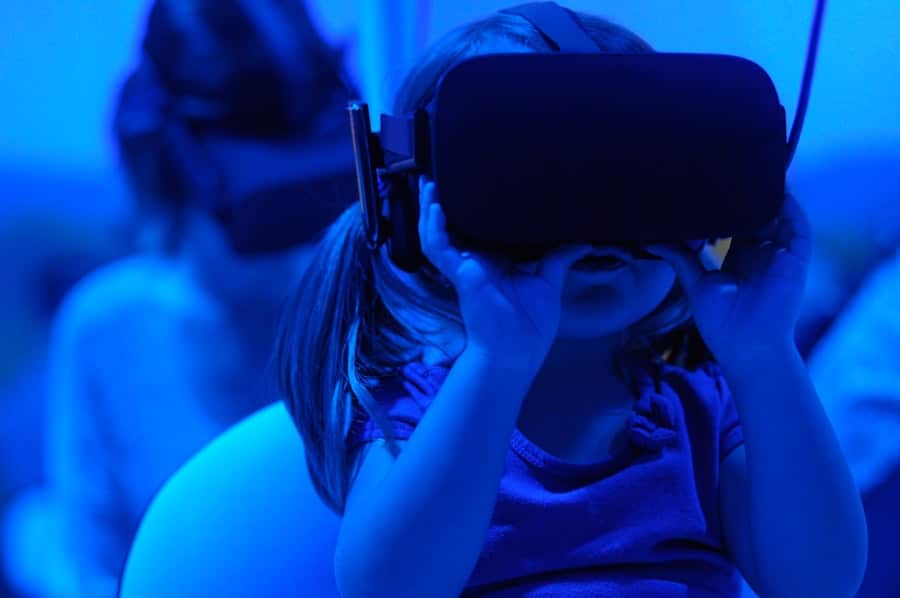Mixed reality (MR) represents a convergence of the physical and digital worlds, allowing users to interact with both real and virtual elements in a seamless manner. This technology has gained traction in various fields, including education, healthcare, and entertainment, with gaming being one of the most prominent areas of application. Hybrid gaming, a subset of mixed reality, combines traditional gaming elements with augmented and virtual reality features, creating a unique experience that transcends conventional gameplay.
As players engage with their surroundings while interacting with digital content, the boundaries between the real and virtual worlds blur, leading to innovative gameplay mechanics and storytelling techniques. The allure of mixed reality lies in its ability to create immersive experiences that captivate players’ senses. By integrating real-world environments with digital overlays, MR enables gamers to explore new dimensions of interaction.
This technology not only enhances the visual appeal of games but also introduces novel ways for players to engage with narratives and challenges. As the gaming industry continues to evolve, the integration of mixed reality into hybrid gaming experiences is poised to redefine how players perceive and interact with their favorite titles.
Key Takeaways
- Mixed reality combines elements of virtual and augmented reality to create immersive gaming experiences
- Mixed reality technology has evolved from simple 2D overlays to complex 3D holograms and spatial mapping
- Mixed reality has the potential to revolutionize traditional gaming by blurring the lines between the virtual and physical worlds
- Hybrid gaming experiences integrate physical and digital elements to create new and innovative gameplay opportunities
- Mixed reality technology plays a crucial role in creating immersive gaming environments by enhancing player engagement and interaction
The Evolution of Mixed Reality Technology
The journey of mixed reality technology can be traced back to the early days of virtual reality (VR) and augmented reality (AR). While VR immerses users in entirely virtual environments, AR overlays digital information onto the real world. The fusion of these two technologies gave rise to mixed reality, which allows for interaction between real and virtual objects in real-time.
The development of sophisticated hardware, such as head-mounted displays and spatial tracking systems, has been instrumental in advancing MR capabilities. Devices like Microsoft’s HoloLens and Magic Leap One have pushed the boundaries of what is possible in mixed reality, enabling developers to create more complex and engaging experiences. As technology has progressed, so too has the software that powers mixed reality applications.
The rise of cloud computing and 5G connectivity has further enhanced mixed reality experiences by enabling real-time data processing and low-latency interactions. This evolution has not only made MR more accessible to developers but has also opened up new avenues for creativity in game design.
Exploring the Impact of Mixed Reality on Traditional Gaming

The introduction of mixed reality has had a profound impact on traditional gaming paradigms. Traditional games often rely on predefined environments and linear narratives, limiting player agency and immersion. In contrast, mixed reality allows for dynamic interactions that adapt to players’ physical surroundings.
This shift encourages a more active form of engagement, where players must navigate their real-world environments while interacting with digital elements. For instance, games like Pokémon GO have demonstrated how MR can transform familiar spaces into interactive playgrounds, encouraging players to explore their neighborhoods while capturing virtual creatures. Moreover, mixed reality fosters social interaction among players.
Traditional gaming often isolates individuals in front of screens, whereas MR experiences can be designed for collaborative play in shared physical spaces. This social dimension enhances the overall gaming experience by promoting teamwork and competition in a way that feels organic and engaging. As players work together to solve puzzles or compete in challenges that blend real-world locations with digital objectives, the sense of community within gaming is strengthened.
The Rise of Hybrid Gaming Experiences
Hybrid gaming experiences are emerging as a significant trend within the gaming industry, combining elements from various genres and technologies to create multifaceted gameplay. These experiences often incorporate aspects of role-playing games (RPGs), first-person shooters (FPS), and puzzle games while leveraging mixed reality features to enhance player engagement. For example, hybrid games may require players to physically move through their environment to complete quests or solve challenges that are influenced by their real-world surroundings.
The rise of hybrid gaming can also be attributed to the increasing demand for more immersive and interactive experiences among players. As technology advances, gamers are seeking out experiences that go beyond passive consumption. Hybrid games fulfill this desire by offering gameplay that is not only visually stimulating but also physically engaging.
The integration of motion tracking and gesture recognition allows players to interact with the game world in ways that feel intuitive and natural, further blurring the lines between gaming and reality.
The Role of Mixed Reality in Creating Immersive Gaming Environments
Mixed reality plays a crucial role in crafting immersive gaming environments that captivate players’ attention and enhance their emotional investment in the game. By merging real-world elements with digital content, developers can create rich narratives that resonate on multiple levels. For instance, a horror game set in a player’s own home can utilize MR technology to project terrifying creatures or unsettling sounds into familiar spaces, heightening the sense of fear and urgency.
Additionally, mixed reality allows for the creation of adaptive environments that respond to player actions in real-time. This interactivity fosters a sense of agency, as players feel that their decisions have tangible consequences within the game world. For example, a puzzle game might require players to manipulate physical objects in their environment to unlock digital clues or pathways.
This level of engagement not only enhances gameplay but also encourages players to think critically about their surroundings and how they can leverage them to succeed.
Examples of Successful Mixed Reality Gaming Experiences

Enhancing Creativity with Minecraft Earth
Another example is “Minecraft Earth,” which allowed players to build structures in augmented reality using their smartphones. Players could place life-sized creations in their real-world environments, inviting others to interact with them. This game exemplified how mixed reality could enhance creativity by allowing players to visualize their ideas in tangible spaces.
Paving the Way for Future Hybrid Gaming Experiences
Although “Minecraft Earth” was eventually discontinued, it paved the way for future hybrid gaming experiences by highlighting the potential for collaborative play in shared environments. These pioneering games have set the stage for the development of more innovative mixed reality gaming experiences that will continue to push the boundaries of what is possible in the world of gaming.
The Future of Hybrid Gaming and Mixed Reality Technology
The future of hybrid gaming and mixed reality technology appears promising as advancements continue to reshape the landscape of interactive entertainment. With ongoing developments in hardware capabilities—such as improved field-of-view in headsets and enhanced spatial awareness—developers will have more tools at their disposal to create intricate and engaging experiences. Furthermore, as artificial intelligence (AI) becomes increasingly integrated into gaming design, we can expect more personalized experiences that adapt to individual player preferences and behaviors.
Moreover, the expansion of 5G networks will facilitate smoother online interactions within hybrid games, allowing for larger multiplayer experiences without latency issues. This connectivity will enable developers to create expansive worlds where players can collaborate or compete seamlessly across vast distances. As hybrid gaming continues to evolve, we may see an increase in cross-platform play that allows users on different devices—such as smartphones, consoles, and VR headsets—to interact within the same game environment.
Challenges and Opportunities in the Mixed Reality Gaming Industry
Despite its potential, the mixed reality gaming industry faces several challenges that must be addressed for widespread adoption. One significant hurdle is the cost associated with developing high-quality MR experiences. Creating immersive environments requires substantial investment in both hardware and software development, which can be prohibitive for smaller studios or independent developers.
Additionally, ensuring compatibility across various devices can complicate development processes and limit accessibility for players. However, these challenges also present opportunities for innovation within the industry. As technology advances and becomes more affordable, we may see an influx of new developers entering the mixed reality space, leading to a diverse array of creative ideas and concepts.
Furthermore, as consumer interest in hybrid gaming grows, there will be increased demand for unique experiences that leverage MR technology effectively. This demand could drive collaboration between hardware manufacturers and game developers, fostering an ecosystem that supports innovation while addressing existing challenges. In conclusion, mixed reality and hybrid gaming represent a transformative shift in how we engage with interactive entertainment.
As technology continues to evolve, so too will the possibilities for creating immersive experiences that captivate players’ imaginations and redefine traditional gaming paradigms. The journey ahead is filled with both challenges and opportunities as developers strive to harness the full potential of mixed reality technology in crafting unforgettable gaming experiences.
Mixed reality technology is revolutionizing the gaming industry by creating innovative hybrid gaming experiences.

